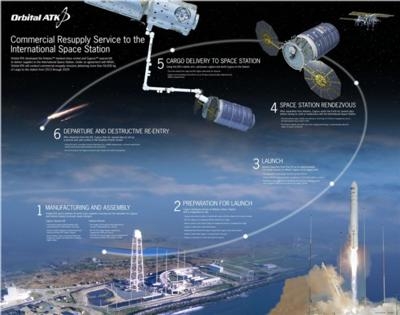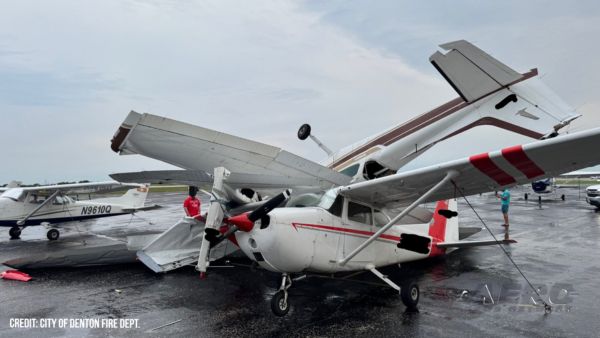Cygnus Continues Its Role As A Platform For Performing Experiments In Space
Orbital ATK has successfully completed its sixth cargo delivery mission to the International Space Station for NASA. Known as OA-5, the mission marked the company’s return to flight operations from NASA’s Wallops Flight Facility in Wallops Island, Virginia and the second time Cygnus has been used as a platform for conducting research in space.

“The OA-5 mission was filled with numerous accomplishments,” said Frank Culbertson, President of Orbital ATK’s Space Systems Group. “We returned to flight operations at our home base in eastern Virginia, successfully launched aboard our upgraded Antares rocket and once again showcased Cygnus’ dynamic versatility and value to serve as a platform for conducting science experiments and payload operations for key customers. I congratulate the entire NASA and Orbital ATK teams for a job well done.”
On November 27 at approximately 6:40 p.m. EST, Cygnus performed a safe, destructive reentry into Earth’s atmosphere over the Pacific Ocean east of New Zealand, successfully concluding the OA-5 mission.
Named the “S.S. Alan Poindexter” in honor of the two-time Space Shuttle veteran, Cygnus launched on October 17, and six days later, berthed with the International Space Station, delivering approximately 5,300 pounds (2,400 kilograms) of vital supplies and science experiments to the astronauts on board. It remained docked for 29 days and departed the space station on November 21. Prior to its departure, the astronauts loaded the cargo module with approximately 2,469 pounds (1,120 kilograms) of items for disposal.
After departing the space station, Cygnus moved into its next phase of serving as an in-orbit science platform. It successfully executed the Saffire-II payload experiment and deployed four CubeSats that will be used for meteorological research. The mission marked the first time that a cargo spacecraft deployed satellites above the orbit of the International Space Station.
The Spacecraft Fire Experiment-II (Saffire-II) was the second in a series of tests to study the behavior of large-scale fires in microgravity. Results from Saffire experiments lead to technologies and materials that will make deep space exploration spacecraft safer for astronauts; a critical factor as NASA prepares for long-duration missions on its journey to Mars.
Orbital ATK successfully sent the command from the ground to initiate the Saffire-II experiment. The command intentionally ignited nine different experimental material samples inside the Cygnus pressurized cargo module which grew and eventually burned out. The experiment, designed by NASA’s Glenn Research Center and funded by NASA’s Advanced Exploration Systems Division, executed as intended. NASA’s Glenn Research Center is currently evaluating all data and imagery gathered from the test.
Following the Saffire-II experiment, Cygnus used a NanoRacks CubeSat deployer to launch four CubeSats into orbit. The spacecraft boosted its altitude to a record 500 kilometers before releasing the satellites into orbit. The altitude boost will increase the on-orbit lifespan of the satellites from about nine months in a typical International Space Station deployment to at least two years. Now in their intended positions, the satellites will help enhance weather forecasting capabilities.
Preparations are underway for the company’s next mission under NASA’s Commercial Resupply Services-1 (CRS-1) contract. OA-7 is targeted to launch in the spring of 2017. Under the CRS-1 contract with NASA, Orbital ATK will deliver approximately 66,000 pounds of cargo to the International Space Station through 2018. Beginning in 2019, Orbital ATK will carry out a minimum of six initial cargo missions under NASA’s CRS-2 contract.
(Image provided with Orbital ATK news release)
 NTSB Prelim: Lancair NLA-275-FR-C
NTSB Prelim: Lancair NLA-275-FR-C ANN's Daily Aero-Linx (09.12.25)
ANN's Daily Aero-Linx (09.12.25) Aero-News: Quote of the Day (09.12.25)
Aero-News: Quote of the Day (09.12.25) ANN's Daily Aero-Term (09.12.25): North Atlantic High Level Airspace (NAT HLA)
ANN's Daily Aero-Term (09.12.25): North Atlantic High Level Airspace (NAT HLA) Aero-News: Quote of the Day (09.13.25)
Aero-News: Quote of the Day (09.13.25)



